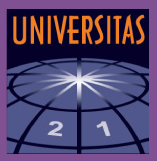Report on the aggregate performance of the public universities in the state of São Paulo
Category: Ranking Monitor
Ranking Monitor
One of the key components of this research project, is to keep track of the metrics, methodologies and impact of international ranking initiatives regarding to participant institutions. This monitor presents a sistematic analysis on a selected group of rankings.
THE Impact 2024
Analysis of the 2024 THE impact Ranking results for the public universities of the state of São Paulo
The Times Higher Education Reputation Ranking for 2023 was released in February
2024, despite although it should be noted that it is the reputation ranking used to inform
the previous year’s rankings. Therefore, it should be considered relevant only to those
results already published, not forthcoming ones.
QS Subject 2022
The QS Subject analyzes participating institutions in 51 areas of knowledge, divided into five broad areas: arts and humanities, life and clinical sciences, natural sciences, engineering and technology, and applied social and social sciences. The performance of state universities in São Paulo in the 2021 edition of the QS Subject was analyzed in a report […]
The GEURS ranking is now in its 11th edition. It is composed of a global survey of employers to ask not only who they regard as the best institutions to employ graduates from, but the skills and dimensions that they value when looking for new hires. This makes the survey more detailed than the similarly structured QS Employability Ranking.
The Times Higher Education Young Universities counts universities that are 50 years old or younger, meaning that in the state of São Paulo the only public universities eligible for inclusion are Unesp (for another four years) and UFABC.
QS 2022 World University Ranking
The QS World University Rankings aims to guide students and their families in choosing higher education institutions. Its methodology is based on: an academic reputation survey (40%); an employer opinion survey (10%); number of students per full-time equivalent academic staff (FTE) (20%); number of citations per FTE staff normalized by area of knowledge and year […]
THE defines a young university as one established less than 50 years previously.
The Nature index’s source is based only on the number of articles published in Nature titles. The index does not contain citations, and only covers the publisher’s own journals. It is therefore neither a measure of impact, nor of productivity, but of a university’s ability to produce articles in one highly reputable source.
This ranking measures, first the result of their academic reputation survey, the second, the results of their employer reputation survey. The other two are the number of citations per paper (citation rate) and a variant of the Hirsch index over five years, which purportedly measures both productivity and the fourth?, highly cited knowledge production, being a measure of h papers with h citations. This means that highly productive research groups are represented better than in mean citation rate.
As the sample has expanded over the past five years – from 200 in 2016 to 533 in 2020. This means that while the universities have improved in all indicators over this period, it cannot be said with certainty that this relates to absolute gains.
This article observes the results and mobility of the São Paulo State HE institutions performance in the THE World University Ranking 2020.
Literature review
We live in an age of accountability. Public expenditure must be measured in terms of its impact and effective deployment in order to satisfy the requirements of democratic states (RANSON, 2003)). One area in which this has had noticeable impact is in higher education, with institutions under pressure to demonstrate effective deployment of resources in a […]
QS

Originally starting out as a partnership between Times Higher Education and Quacquarelli Symonds, before splitting in 2007 into two separate rankings powered by separate ranking compilers
Clarivate
This ranking was previously published by Thomson Reuters, but following the acquisition of their intellectual property wing in 2017 by Clarivate Analytics, who still continue the ranking under the Reuters name.
Webometrics

The Webometrics Ranking has been built and maintained since 2004, and runs on a six monthly, rather than annual, publication cycle. Instead of seeking to represent the university itself, the Webometrics ranking is a measure of the online impact and profile of an institution.
U-21

Unlike the other rankings in consideration, the U21 ranking does not measure the quality of universities, but in the strength of higher education systems, aiming to show how universities function within their local environments, and how supportive their local environments are for creating strong university systems.
U-Multirank

U-Multirank is a comprehensive benchmarking tool for universities produced by CWTS. Instead of aiming to rank and find the ‘best’ university from a global list, it instead aims to offer comparative benchmarking of performance from user defined criteria based on location, size and institutional focus.
URAP

The URAP ranking forms part of the Turkish modernisation and excellence projects. As such it is oriented towards comparing and building the capacity of MENA institutions compared to their global counterparts.
CWTS Leiden

The Leiden ranking seeks to represent only scholarly impact and collaboration through the Clarivate Web of Science. As such it is much more limited in scope than the main rankings.
